Section 1.4: Green Space Programs as a Shared Growth and Communal Process- A Somali Gardener’s Journey in Minnesota
- Last updated
- Save as PDF
- Page ID
- 156479

- August John Hoffman
- Rebus Community
\( \newcommand{\vecs}[1]{\overset { \scriptstyle \rightharpoonup} {\mathbf{#1}} } \)
\( \newcommand{\vecd}[1]{\overset{-\!-\!\rightharpoonup}{\vphantom{a}\smash {#1}}} \)
\( \newcommand{\id}{\mathrm{id}}\) \( \newcommand{\Span}{\mathrm{span}}\)
( \newcommand{\kernel}{\mathrm{null}\,}\) \( \newcommand{\range}{\mathrm{range}\,}\)
\( \newcommand{\RealPart}{\mathrm{Re}}\) \( \newcommand{\ImaginaryPart}{\mathrm{Im}}\)
\( \newcommand{\Argument}{\mathrm{Arg}}\) \( \newcommand{\norm}[1]{\| #1 \|}\)
\( \newcommand{\inner}[2]{\langle #1, #2 \rangle}\)
\( \newcommand{\Span}{\mathrm{span}}\)
\( \newcommand{\id}{\mathrm{id}}\)
\( \newcommand{\Span}{\mathrm{span}}\)
\( \newcommand{\kernel}{\mathrm{null}\,}\)
\( \newcommand{\range}{\mathrm{range}\,}\)
\( \newcommand{\RealPart}{\mathrm{Re}}\)
\( \newcommand{\ImaginaryPart}{\mathrm{Im}}\)
\( \newcommand{\Argument}{\mathrm{Arg}}\)
\( \newcommand{\norm}[1]{\| #1 \|}\)
\( \newcommand{\inner}[2]{\langle #1, #2 \rangle}\)
\( \newcommand{\Span}{\mathrm{span}}\) \( \newcommand{\AA}{\unicode[.8,0]{x212B}}\)
\( \newcommand{\vectorA}[1]{\vec{#1}} % arrow\)
\( \newcommand{\vectorAt}[1]{\vec{\text{#1}}} % arrow\)
\( \newcommand{\vectorB}[1]{\overset { \scriptstyle \rightharpoonup} {\mathbf{#1}} } \)
\( \newcommand{\vectorC}[1]{\textbf{#1}} \)
\( \newcommand{\vectorD}[1]{\overrightarrow{#1}} \)
\( \newcommand{\vectorDt}[1]{\overrightarrow{\text{#1}}} \)
\( \newcommand{\vectE}[1]{\overset{-\!-\!\rightharpoonup}{\vphantom{a}\smash{\mathbf {#1}}}} \)
\( \newcommand{\vecs}[1]{\overset { \scriptstyle \rightharpoonup} {\mathbf{#1}} } \)
\( \newcommand{\vecd}[1]{\overset{-\!-\!\rightharpoonup}{\vphantom{a}\smash {#1}}} \)
This case study narrative describes the personal growth process, learning experiences, and development of a young Somali-American woman (Amian) through the lens of a community gardening and green space program located in St. Paul, MN.
The Big Picture
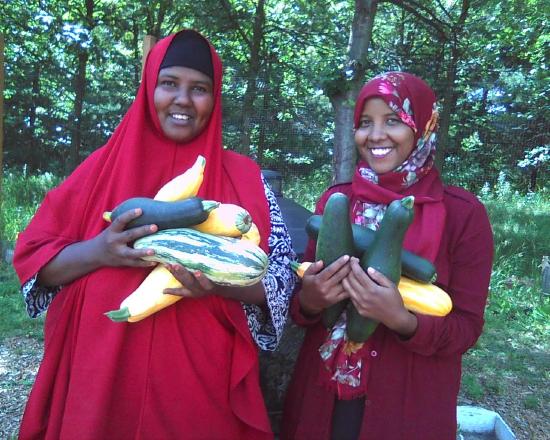
Amian1 is currently completing a graduate program in Individualized Studies with an emphasis in Gardening Development at Metropolitan State University and actively participates in developing healthy foods at several gardens in the Twin Cities region. Her focus is providing members of underrepresented groups with greater access to food plots and enabling them with resources in growing healthier foods. Community growth, collaboration, and communal development of healthy foods is the central thesis of this paper, and how one young woman’s efforts to provide access to healthier foods to underserved and marginalized community members gradually became realized through her work at the Inver Hills – Metropolitan State Community Garden during the Summer 2020 growing season. Amian’s long-term goals include promoting food justice to marginalized groups residing in the upper Midwest region and developing a more sustainable ecosystem that promotes autonomy and healthy living conditions. This case study identifies important psychosocial factors such as community engagement, collaboration, inclusion, and superordinate goals as vital concepts in not only helping to produce a successful community garden but perhaps more importantly how these intersectional qualities can help us to better understand one another and coexist within a more harmonious society.
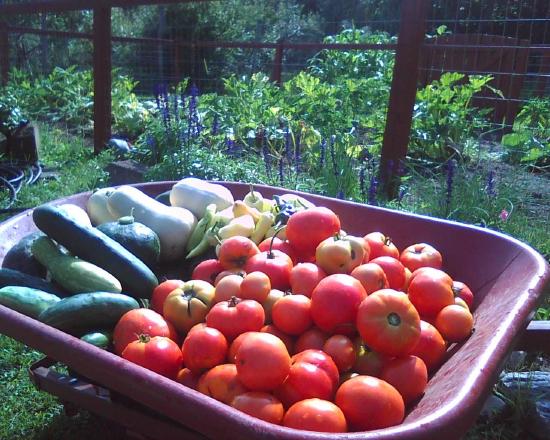
Community gardening, natural outdoor and green space activities have recently gained empirical support in providing a broad range of health-related benefits, including reduced obesity (Ornelas, et al., 2018), ecological resilience among indigenous populations (Shava, et al., 2010), social capital (Alaimo, et al., 2010) and increased community resilience among immigrant populations (Okvat & Zautra, 2011). While community gardens, green space, and natural environments have long remained popular activities among individuals and family members living in both rural and urban environments, only recently have these environments been examined as providing specific benefits such as psychological well-being (Soga, et al., 2017) and improved quality of life among younger populations such as adolescents and children (McCracken, et al., 2016).
More recently, current research has identified activity and participation within community gardening and green space environments as particularly beneficial to immigrant and refugee populations (Hartwig & Mason, 2016). Community gardening and environmentally sustainable green space activities support fundamental principles shared by community psychologists in that they provide unique opportunities for diverse groups of individuals to work collaboratively and establish a stronger sense of community inclusion, engage in social change, and promote psychosocial health (Fetterman, 2015).
The Inver Hills – Metropolitan State University Community Garden
The Inver Hills – Metropolitan State University Community Garden was established in 2010 for the purpose of providing healthy foods to low-income families of the Dayton’s Bluff area located in St. Paul, MN. The garden was established primarily as a cooperative between two higher educational institutions of the Minnesota State System (Metropolitan State University and Inver Hills Community College) and provides an environmentally sustainable learning environment for students from both institutions to work collaboratively in producing a broad
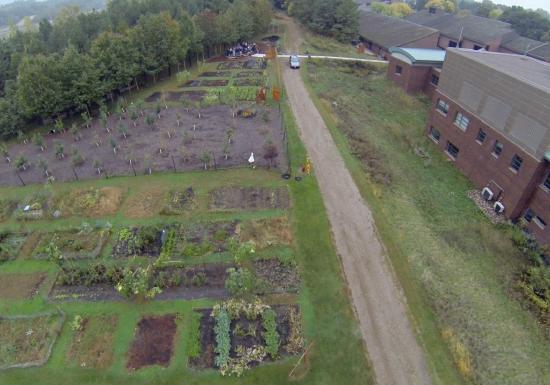
range of healthy foods for community residents. The community garden (approximately one-half acre) is located on the southeast portion of the Inver Hills campus which is located in Inver Grove Heights, MN. The garden is comprised of three separate components or divisions: A cooperative garden area where students work in producing healthy foods for local food banks; a fruit tree orchard (over 60 fruit trees) consisting of over 16 different apple tree cultivars (i.e., Honeycrisp, FrostBite, Haralson, etc.); and the final segment consists of 40 vegetable garden plots (10’ X 10’) designated for community residents. Since 2010, the Inver Hills – Metropolitan State University Community Garden has produced over 15, 000 lbs. of a variety of fresh vegetables and over 3,000 lbs. of apples which have been donated to local charities and food distribution centers throughout St. Paul and Minneapolis. The purpose of this current case study is to provide a personal and in-depth description of how a young Somali-American woman (Amian) has participated and worked in several community gardens in the upper Midwest region (i.e., Big River Farms located in Marine on St. Croix, MN, The Interfaith Garden located in Minneapolis, MN, and The Inver Hills – Metropolitan State Community Garden).
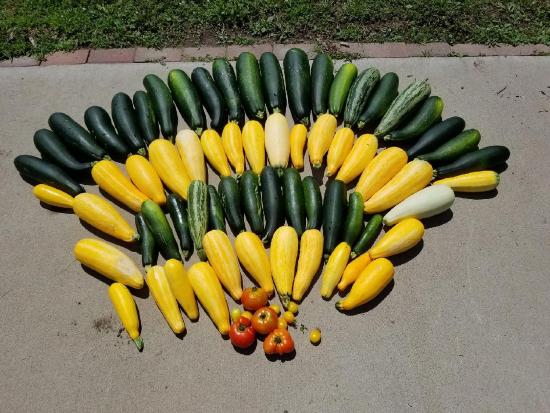
Photo Courtesy of August Hoffman
The current case study will focus primarily on Amian’s work in developing her own community garden at the Inver Hills – Metropolitan State Community Garden located in Inver Grove Heights, MN. An interesting component of this case study review is in understanding how one individual uses her personal experiences in witnessing malnutrition and food insecurity as a young child in Somalia as both a transformational and motivational process in growing healthy foods for underserved populations in the Twin Cities region. Amian’s primary initiative in green space development and community gardening activities has been her early childhood experiences while growing up in Somalia, where food shortages and other natural resources (i.e., potable water) remain increasingly in short supply. Amian comments: “My goal [at the garden] is to grow food for the community specifically for the elders as well as teach healthy food options … and encourage health and wellness during these difficult times.” Additionally, we hope to provide useful information to other immigrant families who would like to participate in community stewardship programs such as community gardening and forestry programs to improve access to healthier foods.
Community Gardening, Social Integration and Health Promotion among Immigrant Families
Given the rapid increases in the populations of individuals living in impacted and urban environments, the benefits of both green space and community gardens are becoming both necessary and important activities that help in sustaining optimal physical and psychological health. For specific refugee and immigrant populations, often just having access to potable water and minimal amounts of sustainable foods are challenges that are faced on a daily basis. According to recent estimates published by the Food and Agricultural Organization (an international agency devoted to promoting healthy foods to impoverished families throughout the world), over 153 million people or approximately 26% of the population of sub-Saharan Africa will suffer from starvation or food insecurity (Food and Agriculture Organization of the United Nations, 2016). The need to promote community gardening programs and skills in producing healthy foods that are similar to the refugee’s native homeland and food environment is critical to the successful transition to the United States (Gichunge & Kidwaro, 2014). In Amian’s personal experience as a child growing up in Somalia, she experienced firsthand how food shortages can have serious negative consequences on the health and welfare of community residents, and how immigrants and POCI populations here in the United States often face disproportionate levels of food insecurity. More specifically, as the frequency of refugee and immigrant populations arriving in the United States have increased over time researchers have discovered that access to native foods through horticultural (i.e., community gardening) and green space programs play a critical link in successful adaptation, assimilation, and improved mental health (Hartwig & Mason, 2016; Wilson, et al., 2010).
Communities that educate how native foods are grown and provide tools and resources within those environments that facilitate a successful harvest can help immigrant families adapt to their new communities more successfully and also improve both psychosocial and physiological
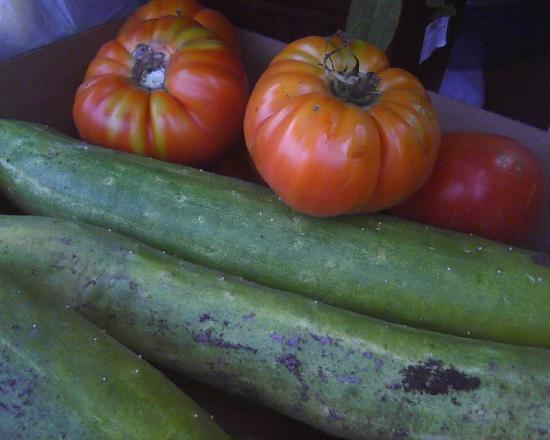
measures of optimal health, including a greater “sense of identity with their former selves” (Hartwig & Mason, 2016, p. 1158). Measures of improved physical and psychosocial health included greater access to organic foods (Carney, et al., 2012), reduced cardiovascular disease, depression (Tracey, et al., 2020) and body mass index (BMI) (Soga, et al., 2017). Recent data suggests that community gardening programs have been associated with the development of healthier and more sustainable lifestyles (i.e., connection with nature, social health, and increased physical activity) that are compatible with ethnically diverse families who are currently living in urban environments (Tharrey, et al., 2019). Additionally, recent topics of research within the discipline of community psychology have identified green sustainable programs such as community gardening as a viable approach in promoting wellness and mental health especially among vulnerable populations (Androff, et al., 2017).
Communities that provide residents with opportunities to share knowledge and their own personal experiences in the development of a community garden not only improve food security but have also been identified as providing other numerous benefits to the community, such as increased social capital, resilience and empowerment among those residents who live within those neighborhoods (Alaimo, et al., 2010). Indeed, communities providing residents with an opportunity to participate in green space and community gardens are perceived as desirable
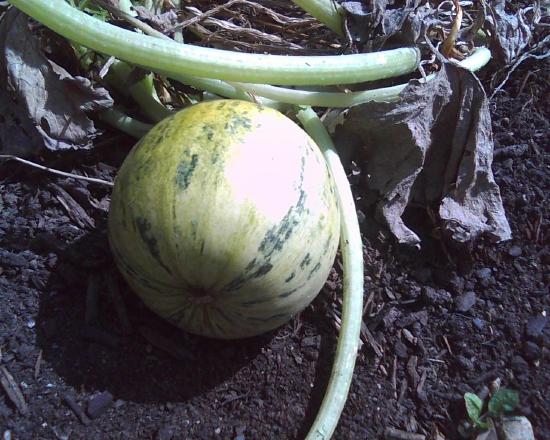
living environments that contribute to a greater sense of psychological well-being, social cohesiveness and trust (Spano, et al., 2020). Amian immigrated to the United States when she was eight years old and has had a life-long passion to provide healthy foods to the community members where she currently resides in Minneapolis, MN. Growing up in a drought-stricken community in Somalia, food and potable water have never been taken for granted and are considered precious commodities. Amian has seen families struggle in just maintaining enough food to survive and has commented that she would like to see a more “collective effort from the community” in participating and contributing to the development of increased sustainable gardening programs. The culture from which Amian is accustomed to is just that – collectivistically oriented to groups working together in promoting a better way of life for survival. In the United States, Amian has commented that people are more dispersed, competitive, and more concerned about getting ahead at the expense of others rather than working collectively to share benefits with each other. “I came from a communal environment” Amian explains, and “when families experience a crisis, such as a death in the family, the first thing we do is to bring food. Food has a wonderful way of bringing people together especially during times of stress and grief.”
Growing Food for a Healthy Community as an Educational Process
An important component of growing healthy foods for the community is education. Part of Amian’s goal in developing a healthy foods program is in helping children understand not only the benefits of healthier eating, but also the actual origins of the foods they consume. Amian is convinced that when children play a role in the development and maintenance of a community garden they are improving their knowledge about food but also are more likely to consume the foods that they have helped propagate. This is especially important with vegetables (i.e., leafy greens) that are healthy but are often less preferential and palatable for younger children (i.e., broccoli, spinach, and kale). In more collectivistically-oriented environments, groups of individuals (of all ages) work together and share the benefits of common goals that are vital to the survival and well-being of community members. Perhaps more importantly, younger populations of children who share in the responsibility of growing healthy and sustainable foods such as mulching, cultivating, planting seeds, and harvesting learn the delicate balance of sustainable eco-systems and the human responsibility in respecting the fragile and finite resources of the environment. Amian has indicated that she is “committed to serving the refugee and immigrant community in Minnesota because . . . I have seen first-hand from my own experiences [in Somalia] coming from an immigrant family. I know that I cannot do this alone, and that is why I have partnered with Big River Farms and The Interfaith Garden.”
From Somalia to Minnesota: Foods that Facilitate Resettlement & Assimilation
Community gardening programs, green space, and natural environments are unique in that they provide numerous health benefits to community residents in both urban and rural areas. Adapting to a new environment as an immigrant or refugee can be very stressful, and providing
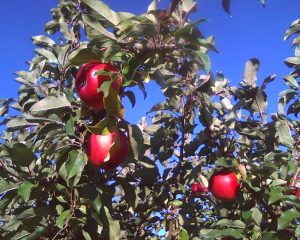
native foods from one’s homeland can be an effective stress-coping mechanism that holds numerous benefits to individual health among vulnerable populations (Tracey, et al., 2020). Minnesota is rapidly becoming a common settlement worldwide among refugees and immigrants who are escaping a number of threats to their personal safety and well-being, including malnutrition, oppressive governments (i.e., ethnic genocide), and persecution for religious beliefs. Currently, Minnesota ranks as the 13th leading state within the United States in resettlement for refugees primarily from Sub-Sahara Africa and Southeast Asia (Hartwig & Mason, 2016, p. 1154).
A Greener Vision for the Future
An important scope and general purpose in community gardening and green space programs is the future itself and how to get more community members involved in participating in sustainable and healthy foods production. Several of the student participants in the community gardening program indicated that they enjoyed working with other students and community participants in providing healthier foods for low-income families. One of the student participants (Abdiaziz) commented that he “loved every minute of working outside to help produce healthy foods for the community members. Providing people with these kinds of opportunities gives us an opportunity to get to know each other better and help people who are less fortunate than us.” Amian has indicated that she is trying to help community members work with immigrant families in a more collaborative process that will not only teaching participants the nutritious benefits of her native foods from Somalia, but that most food-related problems (i.e., shortages of healthy foods) is actually preventable and human-related. “When I started growing my vegetables in the gardens
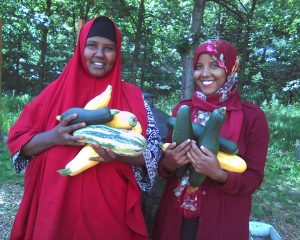
I noticed how much food is wasted here in the United States and that hunger is actually a ‘man-made’ phenomenon.” If she is provided with the resources and opportunities, Amian plans to build an even larger sustainable foods program in southeast Minnesota (Kenyon) up to 20 acres. Amian has indicated that some of her most formidable challenges have been in finding community stakeholders who are willing to help provide resources in the continued development of sustainable green space activities and community gardening programs.
Providing opportunities for immigrants to work in a more collaborative process in the development and proliferation of ethnic foods is an empowering process that can help people from all backgrounds to better understand different cultures. Community psychologists can help facilitate the process of bridging cultural gaps and reducing racial stereotypes by serving as advocates in the development of sustainable green space environments such as community gardens. Amian has found the process of developing sustainable community gardens and providing healthier foods from her native homeland of Somalia personally a very rewarding and intrinsically satisfying experience. Her long-term goals are to provide healthier and organic foods for vulnerable Somali populations and older adults who are currently facing economic hardships. Amian has recognized that “the

voices within the community need to be heard and . . . I would like to see more families eating healthier foods together and growing their own foods.” Amian’s proposal includes planting native seeds from her native homeland Somalia including leafy green vegetables, beans and even fried bananas for families with low incomes in the United States, including immigrant families from Somalia, Ethiopia, Kenya and Southeast Asia. Amian is also concerned about increasing global environmental pollution (i.e., the proliferation of plastics) which directly impacts the quality of soil and water used for agricultural purposes. Her future plans include working in environmentally sustainable projects in the St. Paul and Minneapolis areas and promoting greater access to healthier foods among Somali and other underrepresented populations in these areas. Additionally, Amian is trying to reduce the impact of global pollution through the education and practice of simple environmentally-responsible behaviors, such as recycling, composting, and developing rainwater irrigation systems for garden sites.
Conclusion
The benefits of community gardening cannot be understated. Results of evaluations and studies offer clear evidence that community gardens provide numerous health benefits, improved access to food, related nutritional needs, and improved mental health. An important aspect that can be overlooked is its promotion of social health and community cohesion, both essential aspects of a healthy community.
Read more at: https://nccommunitygardens.ces.ncsu.edu/resources-3/nccommunitygardens-research/
From Theory to Practice Reflections and Questions
- Community gardening and environmentally sustainable green space activities support fundamental principles shared by community psychologists in that they provide unique opportunities for diverse groups of individuals to work collaboratively and establish a stronger sense of community inclusion, engage in social change, and promote psychosocial health (Fetterman, 2015). Share with your classmates or others at least one other way, outside of formal education, that can foster a sense of community, engagement in social change, and the promotion of psychosocial health?
- This case story mentions that a challenge in doing social justice work involving food has been in finding community stakeholders who are willing to help provide resources in the continued development of sustainable green space activities and community gardening programs. Consider and provide examples of how you might address this challenge.
- In addition to physiological well-being, what are some psychological influences of food on one’s sense of community?
Note:
1The person centered in this chapter summary, Amian (name changed), is aware that this chapter is being published and has provided her consent. Due to cultural restrictions of her native country (Somalia) she has requested to remain anonymous.
References
Alaimo, K., Reischl, T. M., & Allen, J. O. (2010). Community gardening, neighborhood meetings, and social capital. Journal of Community Psychology, 38(4), 497-514.
Androff, D., Fike, C., & Rorke, J. (2017). Greening social work education: Teaching environmental rights and sustainability in community practice. Journal of Social Work Education, 53(3), 399–413.
Carney, P. A., Hamada, J. L., Rdesinski, R., Sprager, L., Nichols, K. R., Liu, B. Y., Pelayo, J., Sanchez, A., & Shannon, J. (2012). Impact of a community gardening project on vegetable intake, food security, and family relationships: A community-based participatory research study. Journal of Community Health, 37, 874-881.
Fetterman, D. M. (2015). Empowerment evaluation and community psychology: An alignment of values and principles designed to improve the human condition. In V. C. Scott & S. M. Wolfe (Eds.), Community psychology: Foundations for practice. (pp. 329–348). Sage Publications, Inc. https://doi.org/10.4135/9781483398150.n12
Food and Agriculture Organization of the United Nations (2016). Retrieved from:
Gichunge, C., & Kidwaro, F. (2014). Utamu wa Afrika (The sweet taste of Africa): The vegetable garden as part of resettled African refugees’ food environment. Nutrition & Dietetics, 71, 270-275.
Hartwig, K. A., & Mason, M. (2016). Community gardens for refugees and immigrant communities as a means of health promotion. Journal of Community Health, 41, 1153-1159.
Jason, L. A., Keys, C. B., Taylor, R. R., & Davis, M. I. (Eds.). (2004). Participatory community research: Theory and methods in action. Washington, DC: American Psychological Association.
McCracken, D. S., Allen, D. A., & Gow, A. J. (2016). Associations between urban green space and health-related quality of life in children. Preventive Medicine Reports, 3, 211-221.
Okvat, H. A. & Zautra, A. J. (2011). Community gardening: A parsimonious path to individual, community, and environmental resilience. American Journal of Community Psychology, 47, 374-387.
Ornelas, I. J., Osterbauer, K., Woo, L. Bishop, S. K., Deschenie, D, Beresford, S. A., & Lombard, K. (2018). Gardening for health: Patterns of gardening and fruit and vegetable consumption among the Navajo. Journal of Community Health, 43, 1053-1060.
Shava, S., Krasny, M. E., Tidball, K. G., & Zazu, C. (2010). Agricultural knowledge in urban and resettled communities: Applications to social-ecological resilience and environmental education. Environmental Education Research, 16(5-6), 575-589.
Soga, M., Cox, D.T.C., Yamaura, U., Gaston, K. J., Kurisu, K., & Hanaki, K. (2017). Health benefits of urban allotment gardening: Improved physical and psychological well-being and social integration. International Journal of Environmental Research and Public Health, 14(1), 71. https://doi.org/10.3390/ijerph14010071
Spano, G. D’Este, M., Giannico, V., Carrus, G., Elia, M., Lafortezza, R., Panno, A., & Sanesi, G. (2020). Are community gardening and horticultural interventions beneficial for psychosocial well-being? A meta-analysis. International Journal of Environmental Research and Public Health, 17(10), 3584. https://doi.org/10.3390/ijerph17103584
Tharrey, M., Perignon, M., Scheromm, P., Mejean, C., & Darmon, N. (2019). Does participating in community gardens promote sustainable lifestyles in urban settings? Design and protocol of the JArDinS study. BMC Public Health, 19(589). https://doi.org10.1186/s12889-019-6815-0
Tracey, D., Gray, T., Sweeting, J., Kingsley, J., Bailey, A., & Pettitt, P. (2020). A systematic review protocol to identify the key benefits and associated program characteristics of community gardening for vulnerable populations. International Journal of Environmental Research and Public Health, 17(6), 1-8.
Wilson, A., Renzaho, A.M.N. McCabe, M., & Swinburn, B. (2010). Towards understanding the new food environment for refugees from the Horn of Africa in Australiam, Health Place, 16, 969-976,

